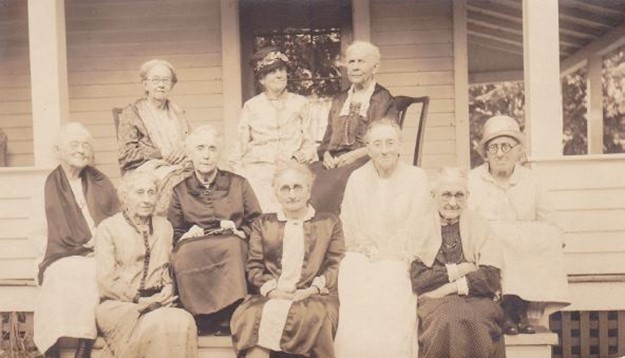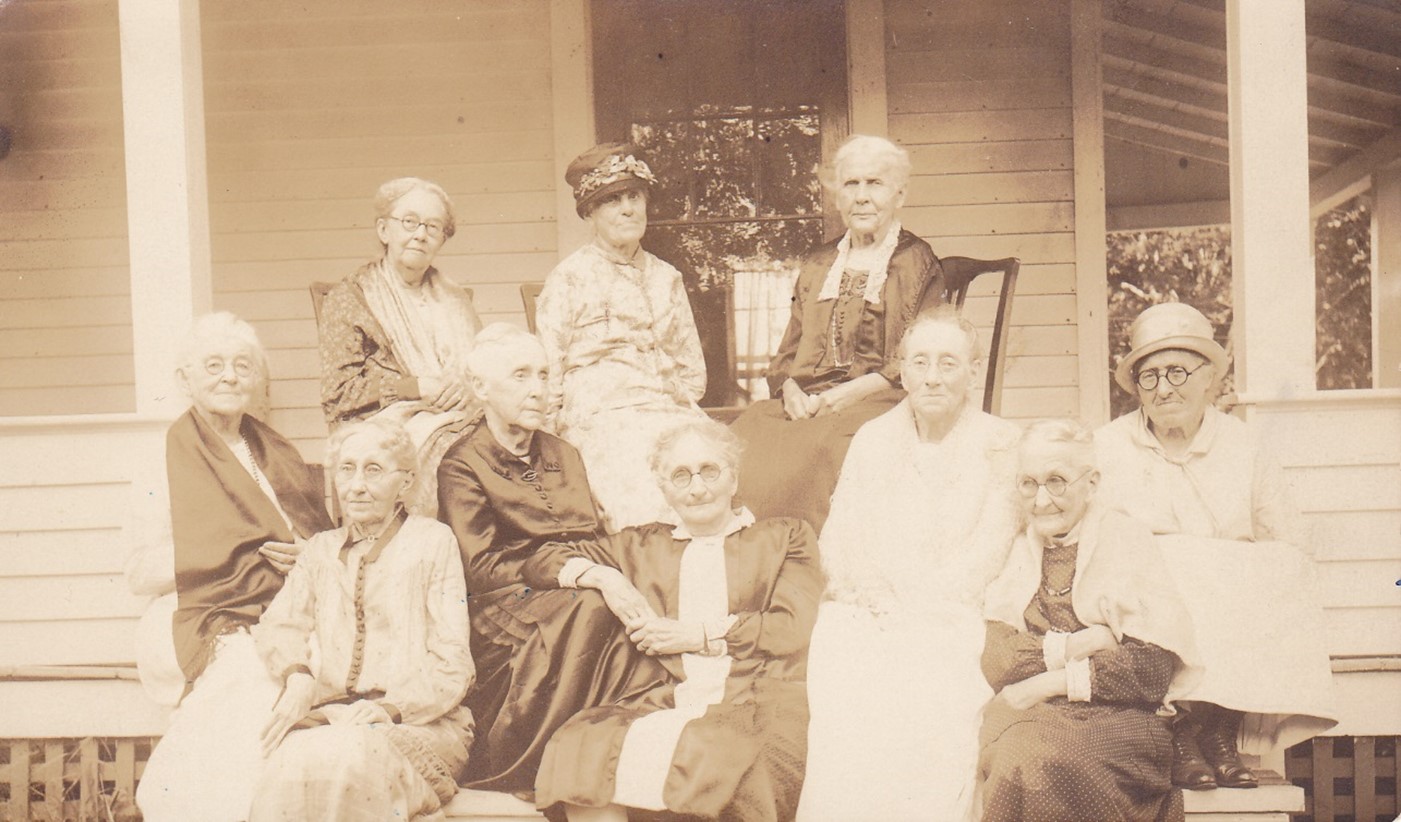Lydia Gower’s Birthday Party 1928 (PEO.32)
Photo of Lydia and other Sedgwick women in 1928 at Lydia’s birthday party
Ladies of Sedgwick celebrating Lydia Gower’s 74th birthday – July 19, 1928
Back row: Mary Hartwell Milliken, Faustina C. Dodge, Emma Gray
Middle row: Addie Billings France, Abbie Byard, Dora Currier, Cyrena Turner
Front row: Ella Byard White, Lydia Sargent Gower, Adelle Parker
In her book, Fifty Days of Solitude, Doris Grumbach reflects on the women in this photo:
“Quiet houses are hospitable to ghosts. They flourish there. I know this because, one night when the power failed, so all the appliances were silenced, no car moved along the road, and I lay upstairs in bed without the intrusive, tinny sound of the battery-radio, I thought I heard Ella Byard, who built this house before she married Captain Willis White, moving about in the hall downstairs.
Then my fantasy grew. I thought I heard her walking to the porch to sit in the sunlight of a cool August afternoon with her women friends and relatives, exactly as the ten of them appear on the back of a postcard given to me by Connie Darrach, one of her descendants in Sargentville. I saw that it was the porch of another house down the road from me, and I remembered Mrs. Darrach telling me the women gathered together every year to celebrate the birthday of her grandmother. Ella Byard is in front left, birdlike and elegant. Addie France, smiling and apparently toothless and wrapped in a shawl, is behind her. Aunt Mae Millikan is bespectacled and very pleasant looking. Emma Gray is next to Faustina Dodge who is wearing a fine black hat and is looking away from the camera. Ella is near her relative Abby Byard, white-haired, handsome, and all in black satin, and Lydia Byard Sargent Gower whose ruffled collar frames a thin neck and a thoughtful, almost grim face. Sweet faced Dora Currier is all in white, rather ghostly among the black-satined other ladies like Lucia Means who sits between her and gloomy, straw-hatted, bespectacled Serena Turner. The occasion appears to be in the 1920s.
Their sloping shoulders, their drawn-back white hair, their hands folded comfortably in their laps, the ten old ladies respond to the camera’s action as if they knew this was a signal moment in their elderly histories, that life might not catch them all together in this way again. In my fantasy they are thus unexpectedly reunited, but this time on my porch, populating my quiet, almost empty house with their ancient shadows, satisfying my sudden need for people.”1
This is a slightly different view of the same group of ladies
______________________________
1 Grumbach, Doris, Fifty Days of Solitude, Beacon Press, 25 Beacon Street, Boston, MA., 1994, pages 50-53.


